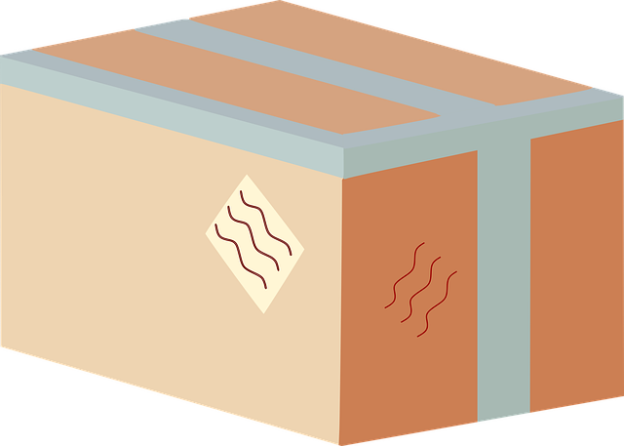These are simple recipes for effective natural pesticides. Applied to gardens, they can replace toxic, commercial brands that can produce harmful health and environmental side effects. These pest controls must be applied at least once a week, and twice if it rains.
Hot Pepper Solution
A general repellent, it is effective for caterpillars, cabbage worms, ants, aphids, beetles, and cutworms.
Recipe: Finely chop 15 peppers and add 1 liter of water. Steep for 24 hours, strain, and apply.
Onion Brew
Onion brew repels a variety of insects, including ants, aphids, army worms, and especially borer insects such as caterpillars.
Recipe: Finely chop 4 cups of onion and add to 2 liters of water. Steep for 24 hours, strain, and apply. Best used when fermented.
Garlic Brew
This brew works to repel many insects, including ants, aphids, and caterpillars, as well as nematodes.
Recipe: Finely chop one-half cup of garlic and add to three-fourths liter of water. Soak for 24 hours, strain, and apply to plant and surrounding soil.
Mint (Mentha)
Mint is relatively easy to grow, if given a lot of water, and once established, can be hard to stop. It can be grown alone or planted among other vegetables, though it should be kept away from cucumbers. It can be used as a repellent against aphids, cabbage pests, and flea beetles, as well as against bacterial diseases.
Recipe: Cut fresh mint leaves and citrus (orange or lemon) peels to make a repellent. Place the pieces in a small pan covered with water, and bring to a boil. Soak overnight and apply during the evening watering.
Tomato-Leaf Spray
This is a particularly effective repellent for aphids and caterpillars, but should not be used on tomatoes, eggplants, peppers, or potatoes.
Recipe: Pack 1 quart of tomato leaves in a sturdy, heat-resistant bucket. Pour 1 quart of boiling water over the leaves, and let the mixture steep for one hour. Next, strain the mixture through a cloth, squeezing the leaf dregs to remove as much liquid as possible. Dilute the mixture with water before using.
Wood Ash
Sprinkling a layer of wood ash around the base of plants a couple of times each week will repel some surface-feeding insects, slugs, and snails by causing dehydration. Wood ash is very fine and gritty, so it works well to deter chewing insects when dusted over certain crops. Once ash gets wet, however, it loses its deterring properties. Continuous use of ash may increase the soil pH or accumulate salts to levels harmful to plants.
Neem (Azadirachta indica)
Neem trees are abundant in many regions and can be used as a very potent natural bioinsecticide. Neem’s extracts have an effect on nearly 400 species of insects, including major pests (moths, weevils, beetles, and leaf miners). The most effective insecticide comes from the seed, but the leaves can also be used. These extracts do not kill insects directly but effectively prevent their reproduction.
Recipe: Dry leaves in shade, as UV rays from the sun break down azadirachtin, their principal chemical compound. When leaves are dry, pound and mix a generous handful of the powder with 10 liters of water. Let steep for 12 to 24 hours. Strain and apply during the evening watering.
Gliricidia (Gliricidia sepium)
Gliricidia is a wonderful tree for soil amelioration due to its ability to fix nitrogen. Its leaves can also provide an insecticide that is effective on both chewing and boring insects.
Recipe: There are two ways to use Gliricidia. First, pick leaves and place near plants to be protected. When they become dry, remove or leave as mulch, and reapply fresh ones. Second, pound a generous amount of leaves, add a small amount of water, and soak for 24 hours. Strain and apply during the evening watering.
Tobacco (Nicotiana tabacum)
Tobacco contains nicotine, which can be used as a potent insecticide. (Be careful, as nicotine is a poison and high concentrations can be lethal.) Target organisms include aphids, cabbage worms, caterpillars, flea beetles, grain weevils, leaf miners, mites, stem borers, thrips, rust, some fungi, and leaf-curl virus. Note: Do not use on tomatoes, eggplants, peppers, or potatoes.
Recipe: First, dry and pound the leaves. Add 20 grams of tobacco to 1 liter of water, soak overnight, and apply during the evening watering.
Soap Solution
Certain brands of hand soap, particularly the local homemade varieties that are plant-based, and some liquid dish detergents can be used in solution as a contact insecticide. (Dry dish soaps and clothes washing detergents should not be used.) To be effective, a soap spray must be applied directly and must thoroughly cover the insect. Most soft-bodied insects and mites are susceptible to soap sprays, including aphids, caterpillars, lace bugs, leaf hoppers, mealy bugs, mites, liver worms, saw flies, scale crawlers, spittlebugs, springtails , thrips, and white flies. Soap solutions can be harmful to certain plants, so caution must be used. If in doubt, test a small area on the plant and wait 24 hours to see if there is an effect. To be safe, always rinse the area treated with water a few hours after application of soap spray.
Recipe: Use 2 tablespoons of grated soap per 1 1/2 liters of water. Apply directly with watering can or homemade broom.
Bug Juice Spray
Gardeners use these sprays effectively to control pests. Pests of a given species will not feed on the plants if members of their colony are found dead on those plants. The smell serves as a repellent and as a warning for the other incoming pests. This is an especially effective insecticide for small garden plots or nursery spaces, but not practical for large-scale operations.
Recipe: Liquefy one-half cup of the targeted beetles, bugs, caterpillars, or slugs in 2 cups of lukewarm water by grinding and straining. (It’s easiest to make this concoction by mashing the bugs and slowly adding in the water.) Dilute one-fourth cup of the bug juice with 1 1/2 cups of water, and spray all plant surfaces thoroughly.
Hillbilly Breath
This homemade insecticide can be used as a catch-all as it deters many different types of insect pests.
Recipe: Mix together in water some chopped mint, ash, garlic, tobacco, and no more than 1 tablespoon of soap. Steep the concoction for 24 hours, strain, and apply the solution with a watering can or a homemade broom.
Beer
Beer attracts slugs. Place a saucer or cup just below the soil surface and fill it with beer. Slugs finding their way into the container will not be able to get out and will drown.
Standard Procedures for the Preparation and Application of Homemade Extracts
- Use utensils for the extract preparation that are not used for food preparation, for drinking, or as cooking water containers. Clean all the utensils thoroughly after using them.
- Do not have direct contact with the crude extract while in the process of preparation or during application.
- Make sure to place the extract out of the reach of children and house pets when leaving it overnight.
- Harvest all of the mature and ripe fruits from any plant before extract application.
- Always test the extract formulation on a few infected plants before going into large-scale spraying.
- Wear protective clothing while applying the extract.
- Wash hands after handling the extract.
These recipes are courtesy of the Peace Corps Gardens Training Package..












